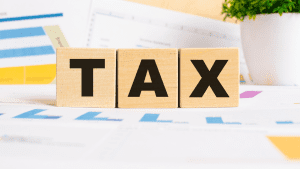
Clients often ask us whether or not they qualify for a home office deduction. The answer to this question depends on many factors. It also hinges on whether or not the individual is an employee or self-employed. For employees to qualify for a home office deduction, the home office must be used for the “convenience” of the employer. This is often the case where an employee spends part of their work week telecommuting. It does not apply where an employee simply chooses to work from home on occasion or even regularly at their own convenience.
For self-employed individuals to qualify they must satisfy one of three tests:
- the principal place of business test
- the place for meeting customers
- or the separate structure test
Most often the home office qualifies as a principal place of business because it is used primarily for management or administrative activities. Expenses are either considered direct or indirect; direct expenses include those that are associated only with home office space such as repairs or maintenance only to the home office and not to the entire home, while those that are indirect may benefit both the home office and personal space of a home, such as electricity. Once you determine you qualify, it takes time to quantify and keep records of all of the direct and indirect expenses associated with a home office.
In 2013, the IRS began offering a simplified method for claiming a home office deduction that requires no record keeping. The only documentation required is of the square footage of the area used for the home office. The deduction equals $5 per square foot, up to a maximum of 300 square feet or a maximum deduction of $1,500. Often, taxpayers use a much smaller portion of their home such as an extra bedroom that has been converted to an office where the square footage might only be 120 sq. ft., which would result in a deduction of $600. This might sound like a win-win for the taxpayer not having to keep records, but can often mean the taxpayer isn’t getting the deduction they might otherwise deserve if they kept adequate records.
Let’s say you have a 2,500 square foot home and your home office takes up 250 square feet of that space. You are using 10% of your home for business. Using the simplified method you would be entitled to a deduction of $1,250 ($5 x 250 sq. ft.) but might be entitled to a much larger deduction by keeping good records. Forgetting about direct expenses, even the indirect expenses can quickly add up. For example, you would be entitled to take 10% of the following expenses; mortgage interest and property taxes (or rent if you do not own your home), utilities, house cleaning, and depreciation on the home. Even gardening might qualify if you meet with customers at your home. Often, 10% of these expenses can easily exceed the deduction of $1,250 that would otherwise be available to you under these facts.
Your LSL Advisor would be happy to assist you in determining whether you qualify and how to best go about keeping good records in order to document your deduction.




